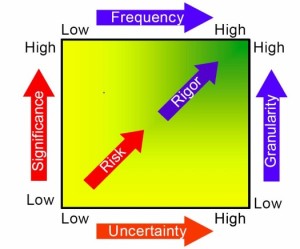One of the speakers at PGCS 2023 is Alex Walsh, his presentation Managing wicked program delivery looks at the UK nuclear program to decommission the Sellafield complex, one of the most complex high hazard nuclear facilities in the world that was operating from the 1940s through to 2022. For more on this presentation and the PGCS program see: https://www.pgcsymposium.org.au/.
As part of my work on preparing the PGCS program, I had a virtual look at this project and came across this fascinating risk mitigation story where the courage of two managers probably saved hundreds of lives in the North of England.
The site
Sellafield, formerly known as Windscale, is a large multi-function nuclear site close to Seascale on the coast of Cumbria, in NW England. As of August 2022, primary activities are nuclear waste processing and storage and nuclear decommissioning. Former activities included plutonium production for nuclear weapons, nuclear power generation from 1956 to 2003, and nuclear fuel reprocessing from 1952 to 2022.
After the war ended, the Special Relationship between Britain and the United States “became very much less special”. The British government saw this as a resurgence of United States isolationism which raised the possibility that Britain might have to fight an aggressor alone. It also feared that Britain might lose its great power status, and therefore its influence in world affairs, so in July 1946, the Chiefs of Staff Committee recommended that Britain acquire nuclear weapons.
Two reactors (called ‘piles’ at the time) were constructed to enrich uranium to create plutonium and other isotopes. The designers of these reactors desired a passively safe cooling system. In place of water, they used air cooling driven by convection through a 400-foot (120 m) tall chimney, which could create enough airflow to cool the reactor under normal operating conditions. The chimney was arranged so it pulled air through the channels in the reactor core, and huge fans were positioned in front of the core, to greatly increase the airflow rate.
The risk
During construction, physicist Terence Price considered the possibility of a fuel cartridge splitting open, causing the hot uranium to catch fire, resulting in fine uranium oxide dust being blown up the chimney and escaping into the environment.
Raising the issue at a meeting, he suggested filters be added to the chimneys, but his concerns were dismissed as too difficult and too expensive to deal with. However, Sir John Cockcroft, leading the project team, was sufficiently alarmed to order the filters.
They could not be installed at the base as construction of the chimneys had already begun, and were constructed on the ground then winched into position at the top once the chimneys were complete. They became known as Cockcroft’s Folly as many regarded the delay they caused and their great expense to be a needless waste.
This all changed after the Windscale fire of 10th October 1957. This fire was the worst nuclear accident in the United Kingdom’s history, and one of the worst in the world. The fire was in Unit 1 of the two-pile Windscale site and burned for three days releasing radioactive fallout which spread across the UK and the rest of Europe[1].
But, the filters trapped about 95% of the radioactive dust and arguably saved much of northern England from becoming a nuclear wasteland. With typical British understatement, Terence Price said “the word folly did not seem appropriate after the accident“.
The UK government under Harold Macmillan ordered original reports into the fire to be heavily censored and information about the incident to be kept largely secret. It later came to light that small but significant amounts of the highly dangerous radioactive isotope polonium-210 were released during the fire. But the presence of the chimney scrubbers at Windscale was credited with minimising the radioactive content of the smoke.
Both the ‘piles’ were shut down after the fire, but a large quantity of radioactive materials are still inside the sealed #1 pile; this is one of the challenges for the decommissioning program Alex will be speaking about at PGCS in a couple of weeks’ time.
More relevant to this post though is the moral courage exhibited by Sir John Cockcroft in doing the right thing rather than the easy thing to guard against an accident that ‘could not happen’, but did! Thinking through this dilemma puts a whole new perspective on risk assessment and mitigation – in the right circumstances ‘black swans’ can kill.
For more on risk management see: https://mosaicprojects.com.au/PMKI-PBK-045.php
[1] For more on the fire see: https://en.wikipedia.org/wiki/Windscale_fire















